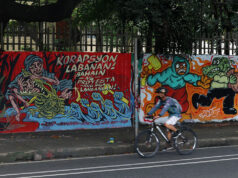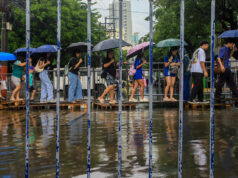Fourth quarter hunger levels decline, SWS study shows
FILIPINO FAMILIES reporting that they experienced “involuntary hunger at least once in the past three months” fell by 2.8 points to 10.5%, equivalent to about 2.4 million families, according to the fourth quarter Social Weather Survey conducted by Social Weather Stations (SWS).
SWS noted that the finding puts the average hunger rate at 10.8% for 2018, or 1.5 points below the 12.3% reported in 2017, and the lowest annual average hunger rate since the 7.0% posted in 2003.
This survey gauges a Filipino family’s experience of hunger according to “involuntary suffering” due to food scarcity.
Hunger in the fourth quarter was the sum of 8.9% (estimated at 2.1 million families) who reported moderate hunger and 1.5% (about 354,000 families) who experienced severe hunger, the report said.
Moderate hunger refers to those who experienced hunger “only once” or “a few times” in the last three months, while severe hunger refers to those who experienced it “often” or “always” in the last three months. The few who did not state the frequency of hunger were classified under Moderate Hunger.
The SWS also added that moderate hunger among Filipino families decreased by 1.7 points from a quarter earlier, to 8.9% at the end of the fourth quarter — the lowest since 8.1% reported in the second quarter.
The survey also found that severe hunger decreased by 1.3 points from a quarter earlier to 1.5% in December. “This is the lowest since the 1.3% in (the quarter ending) June,” the SWS said.
The hunger rate fell in Mindanao and “Balance Luzon” — the part of Luzon excluding Metro Manila. They lost 10 points to 8.3%, and 3.0 points to 9.7% respectively.
As for Metro Manila, the SWS said: “This is the third consecutive increase in the incidence of hunger in Metro Manila, having risen by a total of 12.3 points for the whole of 2018.”
On the 3.2-point gain in the Visayas, the report said: “Still, this gives the Visayas an average hunger rate of 9.4% for 2018, 2.0 points below the 11.4% in 2017. This is the lowest since the record-low 4.5% in 2003.”
The SWS said the survey was conducted on Dec. 16-19, using face-to-face interviews with 1,440 adults nationwide: 360 each in Balance Luzon, Metro Manila, Visayas, and Mindanao.
In a statement, Presidential Spokesperson Salvador S. Panelo said: “The President’s sincere endeavors, whether in taming inflation or running the bureaucracy, have started to bear fruit. We stress that our economy under the first two years of the Duterte presidency, which averages (growth of) 6.6%, is now the highest level of growth compared to the first two years of all previous post-EDSA administrations.”
Sought for comment, University of Santo Tomas (UST) political science professor Marlon M. Villarin said in a phone message: “Since the survey was conducted during the Christmas season (when there were more money remittances) and the time when rice shortage was freshly solved, the responses of the survey respondents were affected by such factors.”
He added that “it is quite odd to say that the Duterte administration’s economic [policy] is beginning to bear fruit because…the effects of excise tax on petroleum products have yet to be felt.” — Arjay L. Balinbin



